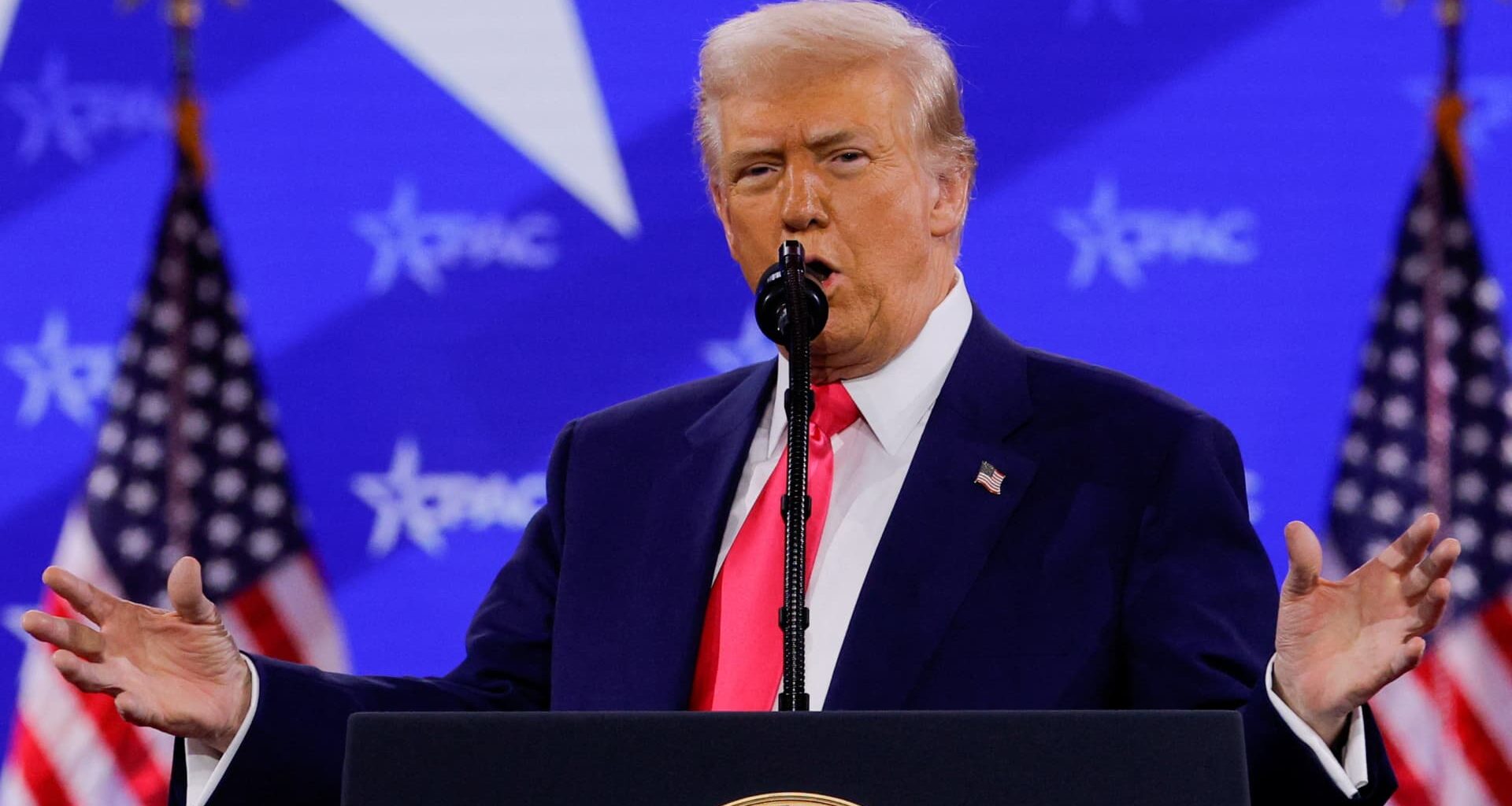Even with most economic indicators holding strong, worries are beginning to creep up that the tumult in Washington could start weighing on growth, posing a potential threat to stocks. For the most part, the data has been solid across traditional yardsticks like job creation , consumer spending and business activity. But in recent days, an unexpected slide in consumer confidence that dovetailed with worries about higher inflation ahead raised the specter that the economy could be headed for some turbulence. Economist Torsten Slok chalked up the misgivings to storm clouds out of the White House as President Donald Trump and his lieutenant Elon Musk seek to slash the federal bureaucracy through job cuts. At the same time, Trump continues to saber rattle on tariffs, adding to the jangled nerves. “The incoming economic data remains strong,” Slok, the chief economist at Apollo Academy, a unit of Apollo Global Management , a private equity firm, said in a note over the weekend. “But we are starting to worry about the downside risks to the economy and markets from: 1) the impact of DOGE layoffs and contract cuts on jobless claims and 2) persistently elevated policy uncertainty weighing on capex spending decisions and hiring decisions.” On a national level, unemployment filings have held fairly steady since Trump came into office but have increased in the Washington, D.C. area . In the city itself, there have been about 6,700 new claims filed since Trump took office, a sharp increase over prior months and the same period in 2024. Should the Department of Government Efficiency, a Musk-led advisory board which Trump has relied on since taking office, hit the consensus level of 300,000 job cuts, second-order effects involving contractors could lead to 1 million layoffs nationwide, Slok said. “Any increase in layoffs will push jobless claims higher over the coming weeks, and such a rise in the unemployment rate is likely to have consequences for rates, equities and credit,” the economist wrote. At the same time, the policy gyrations have added to the climate of uncertainty. Trump has threatened to impose wide-ranging tariffs against U.S. trading partners, while increasing hostilities with Ukraine as he seeks an end to the war with Russia. The global Economic Policy Uncertainty Index has spiked to an all-time high in data going back to 1997. While credit spreads are not widening, as they usually do with rises in the policy measure, “The question is if persistently elevated policy uncertainty will begin to have a negative impact on capex spending and hiring decisions,” Slok said. At the same time, the Citi Economic Surprise Index, a generally countertrend indicator, has hit its lowest level since late-September 2024. The index measures incoming data against Wall Street estimates. Friday showed an especially precipitous fall as the University of Michigan consumer sentiment survey weakened more than expected and respondents sharply increased their inflation expectations at the one- and five-year horizons. The five-year outlook rose to 3.5%, its highest since 1995. Though the Atlanta Federal Reserve’s GDPNow tracker still shows growth running at a 2.3% annual pace in the first quarter, the current trends are indicating trouble, Slok said. “The bottom line is that the incoming data remains strong,” he wrote. “But the near-term downside risks to the economy and markets are growing.”
